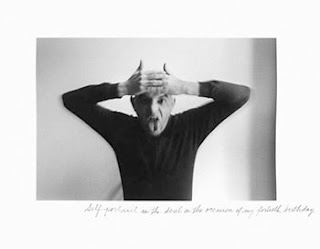 One of the wonders of photography is how it enables an interaction of art and science. A successful photographic vision must take both aspects into account. It’s fascinating to trace trends in photography and tie them to the techniques available at any particular time. Recent changes in digital imaging software often create a concurrent boom in style. For instance, a few years ago Photoshop CS2 introduced a built in High Dynamic Range function. Suddenly everyone was producing (or some might say, overproducing) images that represented luminance values unseen before in previous digital photographs. While this synergy between technology and creativity might seem commonplace in todays rapidly moving digital environment, the history of photography is laced with such interactions.
One of the wonders of photography is how it enables an interaction of art and science. A successful photographic vision must take both aspects into account. It’s fascinating to trace trends in photography and tie them to the techniques available at any particular time. Recent changes in digital imaging software often create a concurrent boom in style. For instance, a few years ago Photoshop CS2 introduced a built in High Dynamic Range function. Suddenly everyone was producing (or some might say, overproducing) images that represented luminance values unseen before in previous digital photographs. While this synergy between technology and creativity might seem commonplace in todays rapidly moving digital environment, the history of photography is laced with such interactions.In 1907 the French Lumière brothers (known as one of the earliest cineasts and inventors of numerous motion film processing techniques) unveiled a new technology for producing color still photographs patented as Autochromes. The production involved grinding potatoes into microscopic grains and then dying these particles in batches of red-orange, violet and green. The potato starch was then thoroughly mixed and coated onto lacquered glass plates. The plates were pressed through rollers to flatten, effectively creating minute color filters.
The autochome method yielded soft, creamy, ethereal colors. The grain was very apparent and it’s coarse uneven quality created stray colors. Yet the inherent imperfection of the process was also its greatest strength, producing a dreamy, almost pointillist effect. As is often in the history of photography’s many permutations, the science determined the art.
Many serious photographers took up the autochrome process including Edward Steichen and Alfred Stieglitz.
Alvin Langdon, an up and coming photographer known for his portraits of Henry James, George Bernard Shaw, W. B. Yeats and Auguste Rodin also jumped into this new world of color photography. In 1908 he produced an iconic image of Mark Twain reclining in red dressing gown holding a pipe in one hand and a book in his other.
Many serious photographers took up the autochrome process including Edward Steichen and Alfred Stieglitz.
Alvin Langdon, an up and coming photographer known for his portraits of Henry James, George Bernard Shaw, W. B. Yeats and Auguste Rodin also jumped into this new world of color photography. In 1908 he produced an iconic image of Mark Twain reclining in red dressing gown holding a pipe in one hand and a book in his other.
The glass plate autochrome process continued successfully until the 1930’s and then became supplanted by more contemporary film based technologies like Kodaks color reversal film, Kodachrome.
There has been a renewed interest in autochrome photography in recent years. The George Eastman House has a significant collection. Last year the Amon Carter museum in Fort Worth, Texas held a major show 100 Years of Autochrome. Currently UC Riverside has an exhibit Smoke and Mirrors The Magic of Autochrome through Jan. 2, 2010.
Links:
Amazon
Wikipedia
Links:
Amazon
Wikipedia























